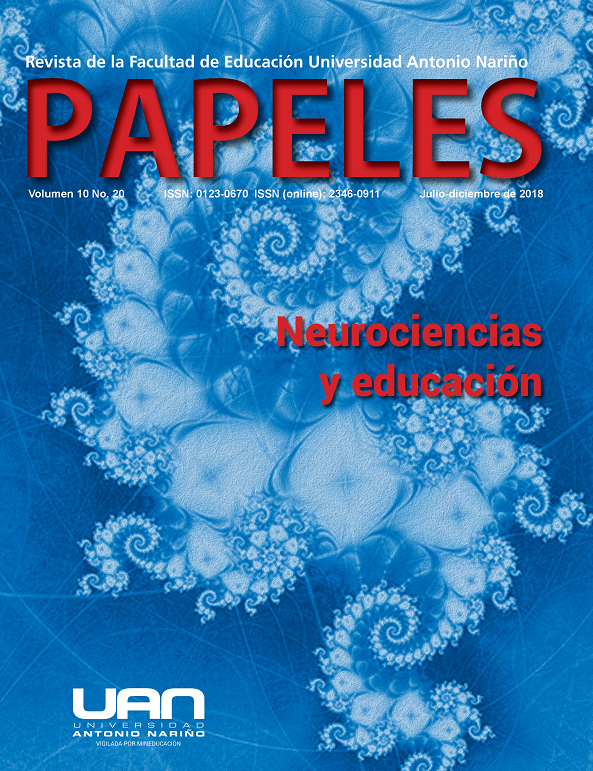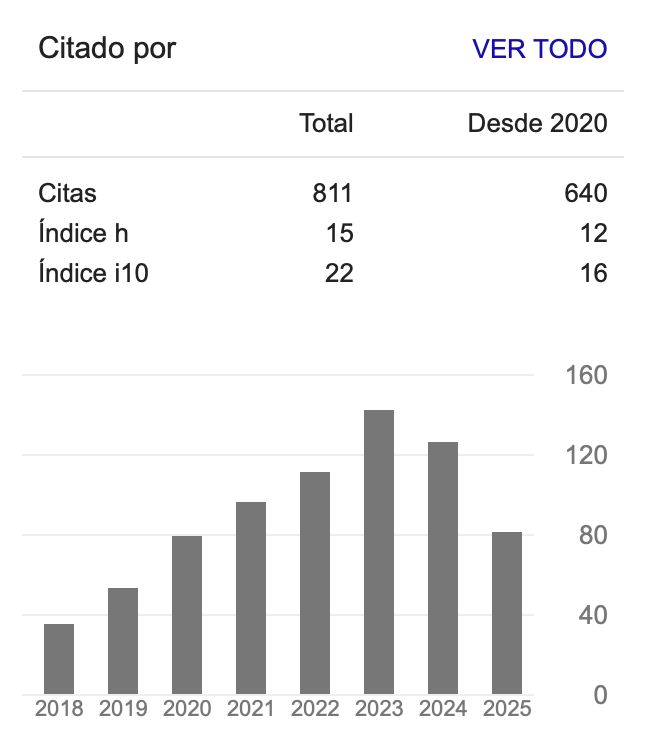Sensory Modulation and Learning Disabilities in School-aged Children with Epilepsy
DOI:
https://doi.org/10.54104/papeles.v10n20.529Keywords:
Sensory Modulation, Epilepsy, Learning Disabilities, LearningAbstract
The objective of this paper is to analyze and characterize the relationship between Sensory Modulation Disorders and Learning Disabilities based on Fundamental Learning Components and examine how this relationship determines the school
prognosis of children with Epilepsy between 7 and 10 years old. Different methods were followed: the Winnie Dunn Sensory Profile and its Supplement, and The Dynamic Occupational Therapy Cognitive Assessment for Children (DOTCA-ch). A nonexperimental, transverse, correlational design was implemented. Participants were classified as Cases (Controlled and Uncontrolled Epilepsy, n = 34) and Controls (n= 54). The results show that Sensory Modulation disorders were reported in 92.05%
(81/88) of the children assessed. Children with Uncontrolled Epilepsy reported behavioral
responses associated to “Poor Registration”, while those in the Controlled Epilepsy group reported responses associated to “Sensory Avoidance”. The most
remarkable alterations of Fundamental Learning Components were observed in the areas of Immediate Memory and Praxis. Significant relations were found between Sensory Modulation Patterns and Learning Disabilities only in the Uncontrolled
Epilepsy group. As conclusion it migh be said that considerations about the learning potential of children with Epilepsy, as well as the appropriate degree of support they need, and their strategies for sensory regulation are key elements to help them to
improve school prognosis and participation in their student role.
Downloads
References
(1) Austin, J. K., & Caplan, R. (2007). Behavioral and Psychiatric Comorbidities in Pediatric Epilepsy: Toward an Integrative Model. Epilepsia, 1639-1651. Ayres, A. J. (2008). WHAT IS SENSORY INTEGRATION? En A. J.
(2) Ayres, Sensory Integration and the Child UNDERSTANDING HIDDEN SENSORY CHALLENGES 25th Anniversary Edition (Tercera Ed.).
(3) Badawy, R. A., Johnson, K. A., Cook, M. J., & Harvey, A. (2012).A mechanistic appraisal of cognitive dysfunction in epilepsy. Neuroscience and Biobehavioral Reviews, 1-12.
(4) Bellefeuille Beaudry, I. (2006). Un trastorno en el procesamiento sensorial es frecuentemente la causa de problemas de aprendizaje, conducta y coordinación motriz en niños. Boletín Pediátrico (46), 200 - 203.
(5) Campos Castelló, J. (2006). Neuropsicología de la epilepsia: ¿qué factores están implicados? Revista de Neurología, 59-70.
(6) Drane, D. L., &Meador, K. J. (9 de Agosto de 2002). Cognitive and behavioral effects of antiepileptic drugs. Epilepsy & Behavior, III, 49-53.
(7) Dunn, W. (1997).Implementing Neuroscience Principles to Support Habilitation and Recovery. En C. H. Christiansen, & C. M. Baum, Occupational Therapy: Enabling Function and Well-Being (págs. 182-232).
(8) Dunn, W. (1999). Sensory Profile. United States of America: Pearson. Dunn, W. (2006). Sensory Profile Supplement. United States of America: Pearson.
(9) Dunn, W. (2010). A ‘‘Sensational’’ Way to Understand and Serve Children: Illustration of a Sensory Processing Model. En J. Niskala Apps, R. F. Newby, & L. Weiss Roberts, Pediatric Neuropsychology Case Studies: From the Exceptional to the Commonplace. Springer.
(10) Dunn, W. (Abril de 1997). The Impact of Sensory Processing Abilities on the Daily Lives of Young Children and Their Families: A Conceptual Model. INFANTS AND YOUNG CHILDREN, IX (4), 23-35.
(11) Dunn, W. (Noviembre - Diciembre de 2001). The sensations of everyday life: empirical, theoretical, and pragmatic considerations. American Journal of Occupational Therapy, LV (6), 608-620.
(12) Katz, N., Parush, S., & Bar-Ilan, R. T. (2004). DOTCA - ch Dynamic Occupational Therapy Cognitive Assesment for Children. Jerusalem, Isral: Maddak.
(13) Medina Malo, C. (2004). Proceso de Aprendizaje. En C. Medina Malo, EPILEPSIA, Aspectos Clínicos y psicosociales (págs. 420 - 424). Bogotá D.C: Editorial Médica Panamericana.
(14) Morillo Zárate, L. E. (2004). Bases para implementar acciones. En C. Medina Malo, Epilepsia, Aspectos clínicos y psicosociales. Bogotá D.C: Editorial Médica Panamericana.
(15) Mulas, F., Hernández, S., & Morant, A. (2001). ALTERACIONES NEUROPSICOLÓGICAS EN LOS NIÑOS EPILÉPTICOS. REVISTA DE NEUROLOGÍA CLÍNICA, II(1).
(16) Mulas, F., Hernández, S., Mattos, L., Abad - Mas, L., & Etchepareborda, M. (2006). Dificultades del aprendizaje en los niños epilépticos. Revista de Neurología, 157-162.
(17) Organización Panamericana de la Salud. (2008). INFORME SOBRE LA EPILEPSIA EN LATINOAMÉRICA. Panamá: AG Publicidad.
(18) Pavlou, E., & Gkampeta, A. (2011).Learning disorders in children with epilepsy. Child's Nervous System, 373 - 379.
(19) Pradilla A, G., & Vesga A, B. E. (2003). Estudio neuroepidemiológico nacional (EPINEURO) colombiano. Revista Panamericana Salud Pública, XIV(2).
(20) Román-Oyola, R. L. (Noviembre de 2011). Sensory Modulation Disorder in Puerto Rican Preschoolers: Associated Risk Factors (Dissertation for degree of Doctor of Philosophy)). Virginia Commonwealth University, Richmond, Virginia.
(21) Tiège, X. D., Harrison, H., Laufs, H., Boyd, S., Clark, C., Allen, P., . . . Cross, J. (14 de Septiembre de 2007). Impact of interictal epileptic activity on normal brain function in epileptic encephalopathy: An electroencephalography–functional magnetic resonance imaging study. Epilepsy & Behavior, XI, 460-465.
(22) Trujillo Troncoso, C., Cárdenas Cortés, V., & Martínez Hernández, D. (2004). Enfoque de terapia ocupacional. En C. Medina Malo, Epilepsia Aspectos clínicos y psicosociales (págs. 444 - 455). Bogotá: Médica Panamericana.
(23) Van Campen, J. S., Jansen, F. E., Kleinrensink, N. J., Joëls, M., Braun, K. P., & Bruining, H. (2015). Sensory modulation disorders in childhood epilepsy. Journal of Neurodevelopmental Disorders, 1-11.
(24) Vijayaraghavan, L., Natarajan, S., & Srinivas Krishnamoorthy, E. (2011). Peri - ictal and ictal cognitive dysfunction in epilepsy. Behavioral Neurology, 27-34.
Downloads
Published
-
Abstract1080
-
PDF (Español)929
How to Cite
Issue
Section
License

This work is licensed under a Creative Commons Attribution-NonCommercial-ShareAlike 4.0 International License.






